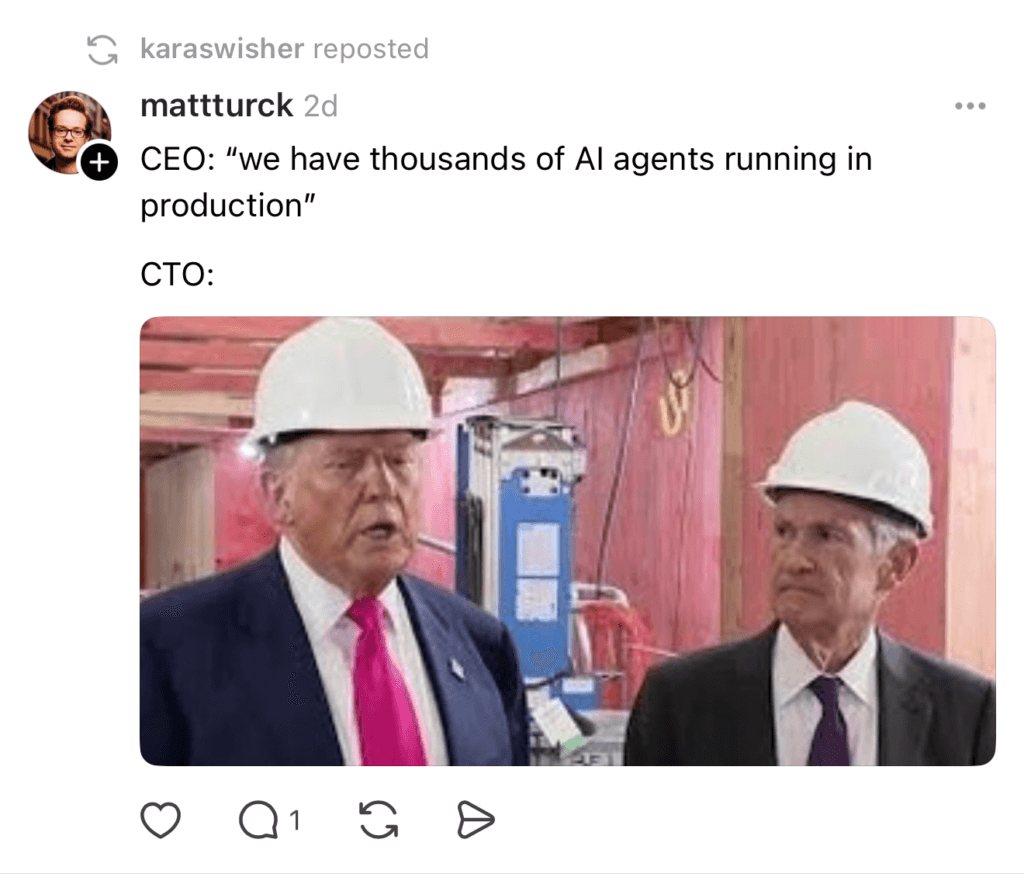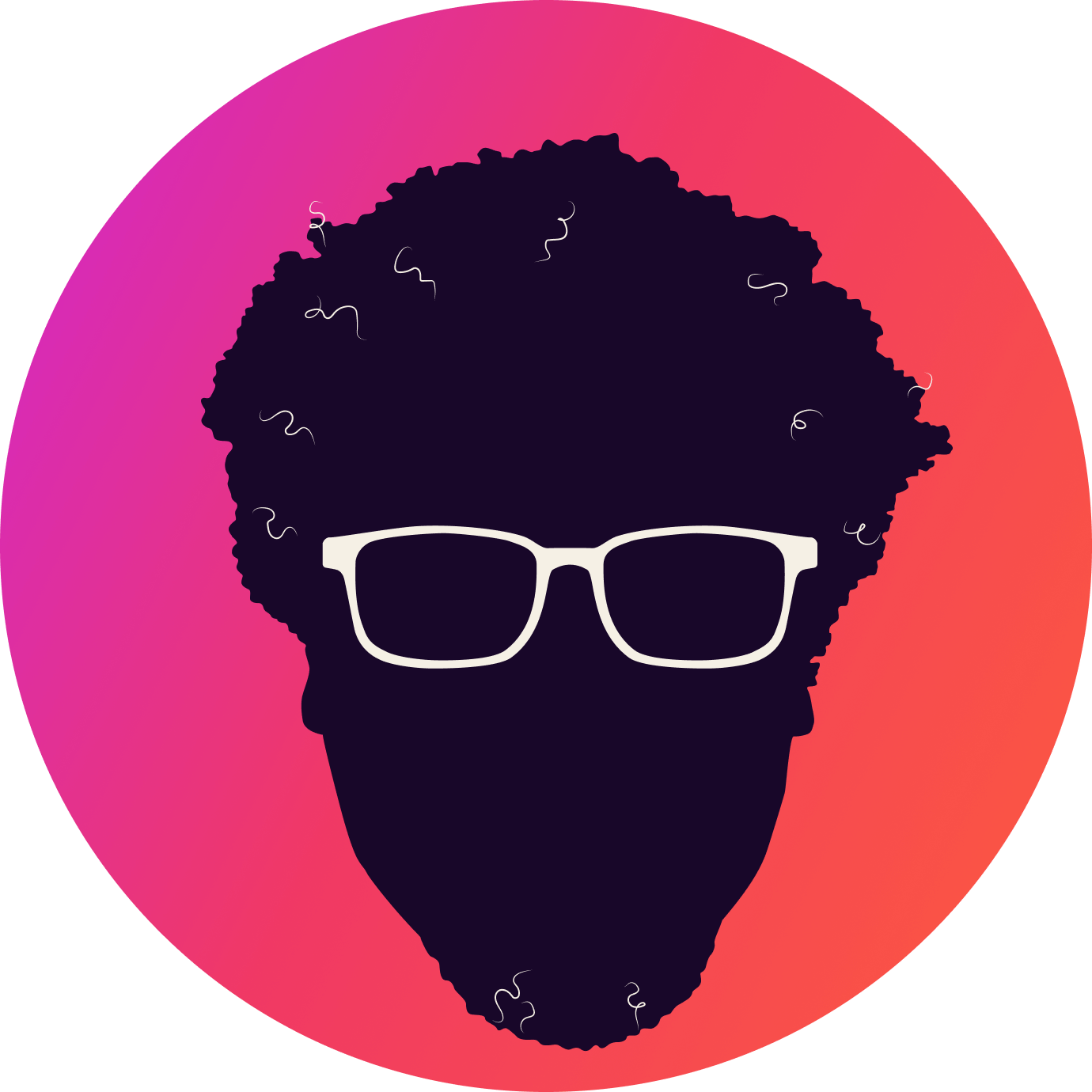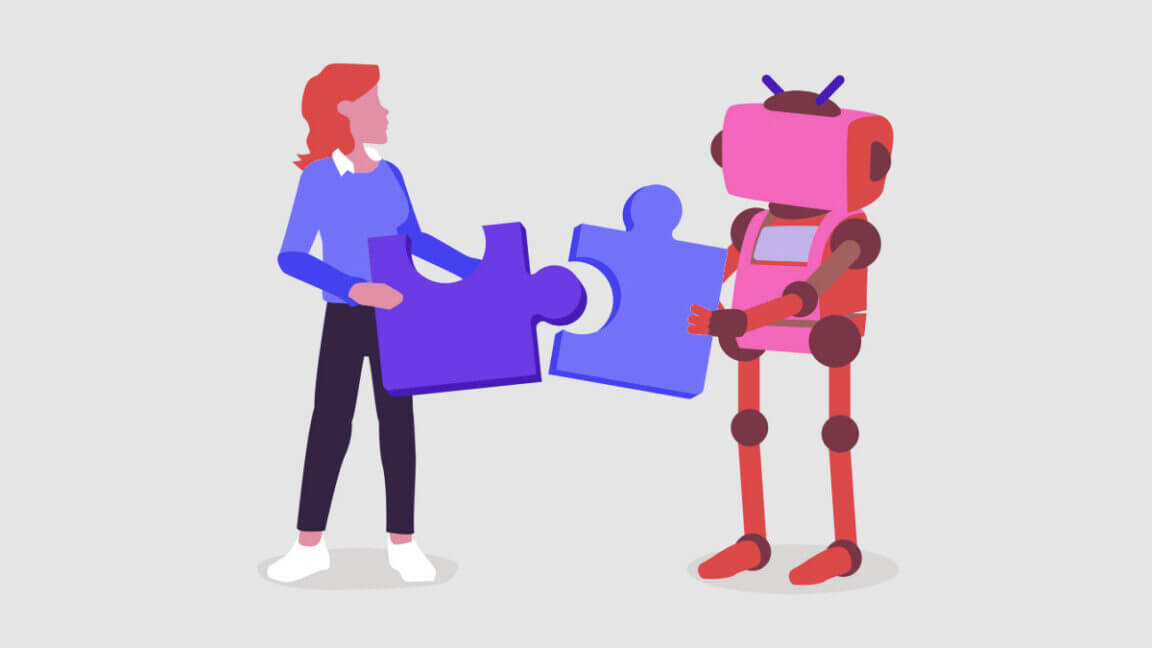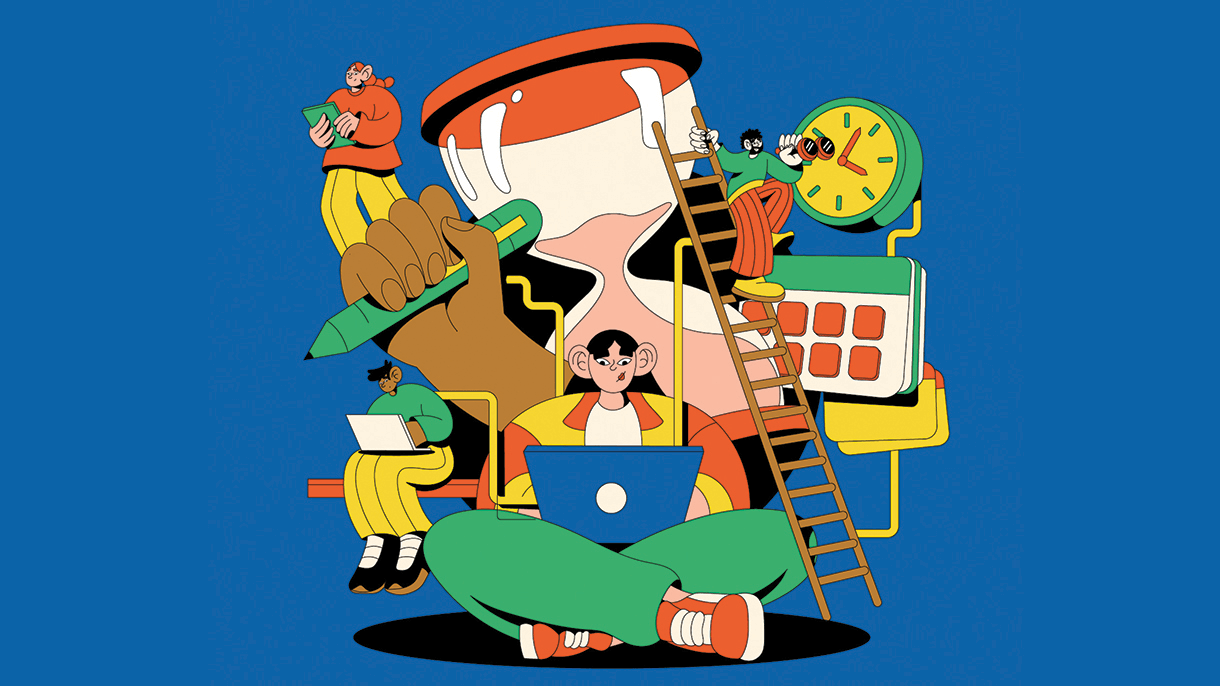Latest Thoughts
-
🧠 AI Pricing Isn’t the Problem
AI use cases aren’t always about novelty. Sometimes the power is simple: process more information, make better decisions, and act immediately. That’s exactly what sparked controversy last week when Delta announced plans to use AI to personalize airfare pricing. After public pushback, Delta clarified that it was using a partner to dynamically adjust prices based on demand and competitors, something airlines have done for decades.
What’s changed is the speed.
Before AI, we saw the same pattern in retail stores like Best Buy and Walmart rolling out e-ink price labels to make price changes cheaper, faster, and less error-prone. What used to take days now takes minutes. These systems weren’t about AI. They were about enabling action at scale.

Today, companies like are building AI-powered pricing systems that go even further, integrating with ERP and supplier data to adjust prices in real time. Working with groups like PerryLabs, they’re pushing updates across hundreds of products or stores multiple times a day. When margins shift due to something like a tariff change or supplier shortage, the system responds. Fast. Strategically. Without waiting for a human in the loop.
That’s the pattern: AI isn’t changing how business is done or how pricing has worked for centuries, it’s just enabling those decisions to happen faster than ever before.
-
🧠 We’re Still in the AOL Days of AI
AOL launched in 1983, Amazon didn’t show up until a decade later, and Google nearly two decades. That’s the kind of timeline we’re on with AI, not just early, but early enough that we still haven’t figured out how to use it at work.
According to a new AP poll, 60% of U.S. adults have used AI to search for information, but only 37% have used it at work. The gap isn’t about capability, it’s about confusion. Companies are rolling out vague governance policies that say, “don’t use ChatGPT with company data,” but then fail to offer secure, internal tools connected to their systems. The result? No context, no value, and no adoption.
When my team at PerryLabs talks with companies, we see it again and again: well-meaning governance that blocks data access, without a real plan to replace it. That creates hallucinations, frustration, and a quiet surge in shadow IT as employees turn to whatever tools they can find. It’s like choosing not to give your team a performance boost, and acting surprised when you fall behind.
-
🧠 The hardest part of AI right now? Making the promise possible.
Walmart’s move toward super agents is one of the clearest examples of where this space is heading. Agents that don’t just answer questions, but take action. These aren’t JUST chatbots. They’re orchestrators: agents that talk to other agents, trigger workflows, and pull the right data at the right time to get real work done.
But you’ll notice something missing, details on how they’re actually doing it.

Everyone’s using the buzzwords, super agents, orchestration, real-time, action layers, but the tooling to make it all work takes work to build. Its not a data lake, and its definitely not plug-and-play.
In The AI Evolution, I point to data lakes as a foundational layer, and they are. But they’re built for reporting, not action. What agentic AI needs is a layer that’s both readable and executable, with access to real-time context and permissions.
If you’re taking with companies that aren’t saying this you’re building a huge data swamp, that won’t unlock the things that Walmart ays they have. The reality is that most teams are duct-taping workflows together with brittle APIs or pushing dashboards behind a chat interface and calling it an agent.
That’s the space I’m often finding our work at PerryLabs. Not just demoing agents, but building the underlying layers to actually deploy them, and for lots of companies the scaffolding just is not there yet.
-
Development Needs an AI-First Rewrite

I’ve spent the better part of the last two decades running or being a part of development teams, and as a developer I’m experimenting a lot with using AI tools, and I’m not alone, lots of people in the tech space are. So it comes as little surprise that these same teams are seeing the biggest impact from the ongoing shift to AI-native development.
A few weeks ago, I caught up with a dev manager friend, and without prompting, we jumped straight into a conversation about how fast everything is changing. For years, we’ve focused on building processes and procedures to help human teams collaborate and build complex software applications. But in the world of AI, the model is changing, and sometimes dramatically. What used to be a multi-person effort can now be a single human orchestrating multiple AI tools.
A perfect example: microservices.
The trend of breaking up complex applications into smaller pieces has been hot for a while now. It lets organizations build specialized teams around each part of the application and gives those teams more autonomy in how they operate. That made sense, when your team was all human.
But in an AI-first world, it can actually make things harder.
A single repository might only represent a slice of the full application. And if you’re using an AI tool to review code, it can’t easily load up the full context of how everything connects. Sure, you can help the AI out with great documentation or give it access to multiple repos, but at the core, microservices are optimized for distributed human teams. They’re not necessarily optimized for AI tools that rely on full-graph context.
That’s why, in some cases, building a more complex monolithic application may actually be a better approach for AI-native teams building with (and for) AI tools.
Another place I’ve been experimenting is in seeding AI with persistent context, so I don’t have to be overly verbose every time I assign it a dev task. I caught myself over-explaining things in prompts after the AI would do something unexpected or take an approach I didn’t want. So I started adding AI-specific README files at the root of my projects. Not for humans—for AI.
These files include architecture decisions, key concepts, and even logs of recent changes or commits. When I’m using Claude inside VS Code, for example, I sometimes hit rate limits. If I need to switch to another model like Gemini or ChatGPT to pick up the work, I don’t want to start from scratch. Those AI README files give them the full context without having to re-prompt from zero.
This is the kind of data that might be overwhelming for a human reviewer, but trivial for an AI model. And that’s part of the mindset shift. Developers are used to writing comments or notes that are for humans. But AI models benefit from verbose, detailed explanations. Concise isn’t always better.
AI also gives us an opportunity to finally shed some of the legacy technical debt that’s haunted development teams for decades. When Amazon first announced its AI assistant Q back in 2022, one of the headline features was its ability to upgrade old Java applications, moving from decades-old versions to the latest in minutes. Since then, I’ve seen multiple companies use AI to fully rewrite legacy systems into modern languages in weeks instead of years.
For some of the best programmers I know, this is a little distressing. They see code as craft, as poetry. And just like writers grappling with ChatGPT, the idea that AI can churn out working code with no elegance can feel like a loss. But beauty doesn’t always move the bottom line. Sure, I could pay top dollar for a handcrafted implementation. But the okay code produced by an AI tool that works, ships faster, and gets us to revenue or cost savings sooner? That’s usually the better trade.
And it’s not just the dev process, it’s entire products on the line. My friend put it bluntly: they used to rely on a range of SaaS tools because it wasn’t worth the effort to build them in-house. But now? A decent engineer with AI support can quickly build tools that used to require a paid subscription. That’s an existential threat for SaaS platforms that haven’t built a deep enough moat.
Take WordPress, for example. I know developers who used to rely on dozens of plugins, anything from SEO tweaks to form builders to table generators. Today, with AI support, they’re writing that functionality directly into themes or making their own plugins with AI. It’s faster, lighter, and more tailored to what they need. The value of external tools or those one-line NPM packages we used to reach for just to save time starts to diminish when you’ve got an army of AI bots doing the work for you. The calculus changes.
I always say in my talks that this is still the AOL phase of AI, it’s early. But what’s happening inside development teams is a preview of what’s coming for every other function in the business. We’ve spent decades refining human-first processes that work across teams, tools, and orgs. Now we’re going to have to rethink those processes, one by one, for an AI-first future.
-
🧠 AI is the Great Equalizer and the Ultimate Multiplier
OpenAI just released its first productivity report, based on real-world deployments of AI tools across consulting firms, government agencies, legal teams, and more. The results? Proof that AI isn’t just speeding up tasks, it’s fundamentally shifting how work stuff done.
- Consulting: AI made consultants 25% faster, completing 12% more tasks with 40% higher quality. The biggest gains? Lower performers, up 43%.
- Legal services: Productivity jumped 34% to 140%, especially in complex work like persuasive writing and legal analysis.
- Government: Pennsylvania state workers saved 95 minutes per day, a full workday back every week, by using AI tools.
- Education: U.S. K–12 teachers using AI saved nearly 6 hours per week, the equivalent of six extra teaching weeks a year.
- Customer service: Call center agents became 14% more productive, with junior staff seeing the biggest gains.
- Marketing: Content creators using AI saved 11+ hours per week on copy, ideas, and assets.
These aren’t just stats. They’re signals that AI doesn’t just help people work faster. We’re entering a moment where tools do more than help, they amplify.
AI can take a D player and make them a B. What it does for your A and B players. It turns them into 10x or 100x power houses. Not just faster, but more scalable, and more consistent.
In my book The AI Evolution, I talk about this movement as a shift to Vibe Teams. Small, AI-augmented groups that pair human strategy with agentic execution. They’re cross-functional. They move fast. They scale without headcount. And they don’t just adopt AI, they build with it.
-
🧠 The Fraud Risk No One’s Ready For
I agree with Sam Altman, AI-powered deepfakes and voice cloning are one of the most alarming risks we’re facing right now.
Here in Baltimore, we’ve already seen how real this can get. Last year, a Pikesville high school principal was accused of making racist comments—until it came out that the entire recording was a voice clone. After that, I experimented with cloning my own voice and doctoring a video of myself. It wasn’t perfect, but it was close enough to be unsettling.
Systems that rely on voice to ID customers just aren’t safe anymore. Tools like ElevenLabs have made cloning voices frighteningly easy, and if you’ve ever said a few words online or been recorded at an event, chances are you’ve given someone enough data to copy you.
Scammers are already using these tools in the wild, and combined with the mountain of personal info already floating around online, it’s easy to imagine how these attacks are getting harder to detect. Security training used to teach us that phishing emails were easy to spot. Look for misspellings, weird tone, bad grammar. But now? The grammar’s perfect. The details are specific. And the sender sounds like your boss, your partner, or your kid.
So what can you do? Start with the basics. And remember, it’s not just about locking down your own account. Train your team. Talk to your family. Assume your voice and your data are already out there, and focus on making it harder for attackers to weaponize them.
Use multi-factor authentication. Slow down before responding to anything unusual. And always, always, verify through a second channel if something feels off. No one’s going to get upset if you hang up and call them back. Or shoot them a text to double-check. That extra step might be the thing that saves you from all this mess.
-
🧠 Not All Citations Can Be Trusted
If you’re not familiar with the term “hallucination,” it’s what happens when an AI confidently gives you an answer… that’s completely made up. It might sound convincing. It might even cite a source. But sometimes, a quick Google search is all it takes to realize that study, case, or quote never existed.
That’s the scary part. And it’s not going away.
In fact, hallucinations are getting worse, not better. And the bigger issue is that AI is now quietly woven into the background of nearly everything we read: articles, presentations, reports, sometimes even court filings.
That’s why I think we’ll start seeing a shift where citations aren’t just taken at face value anymore. Judges, editors, and program officers need to start asking: “Did you actually check this, is this citation real?”
The good news? There’s a growing wave of tools designed to help with exactly that:
- Sourcely scans your writing and suggests credible, traceable sources, or flags weak ones that don’t hold up.
- Scite Assistant reviews your citations and shows whether later research supports or contradicts the claim.
- Perplexity isn’t perfect, but I often use it as a quick smell test when an AI-generated response feels a little too slick.
- LegalEase, Westlaw, and other legal tools are already helping firms and courts catch citation errors before they make it into the record.
Just because a model says it, and even if it drops a polished citation, doesn’t mean it’s true. We used to say, “Just take a look, it’s in a book.” Now? You better take a second look, and make sure that book actually exists.
If your work is making claims – especially ones tied to legal precedent, public health, or science – then checking those claims has to become part of the workflow.
Truth still matters. And in the age of generative content, fact-checking is the new spellcheck.
-
The Problem with Data

Everyone has the same problem, and its name is data. Nearly every business functions in one of two core data models:
- ERP-centric: One large enterprise system (like SAP, NetSuite, or Microsoft Dynamics) acts as the hub for inventory, customers, finance, and operations. It’s monolithic, but everything is in one place.
- Best-of-breed: A constellation of specialized tools – Salesforce or HubSpot for CRM, Zendesk for support, Shopify or WooCommerce for commerce, QuickBooks for finance – all loosely stitched together, if at all.
In reality, most businesses operate somewhere in between. One system becomes the “system of truth,” while others orbit it, each with its own partial view of the business. That setup is manageable until AI enters the picture.
AI is data-hungry. It works best when it can see across your operations. But ERP vendors often make interoperability difficult by design. Their strategy has been to lock you in and make exporting or connecting data expensive or complex.
That’s why more organizations are turning to data lakes or lakehouses, central repositories that aggregate information from across systems and make it queryable. Platforms like Snowflake and Databricks have grown quickly by helping enterprises unify fragmented data into one searchable hub.
When done well, a data lake gives your AI tools visibility across departments: product, inventory, sales, finance, customer support. It’s the foundation for better analytics and better decisions.
But building a good data lake isn’t easy. I joke in my book The AI Evolution, a bad data lake is just a data swamp, a messy, unstructured dump that’s more confusing than helpful. Without a clear data model and strategy for linking information, you’re just hoarding bytes.
Worse, the concept of data lakes was designed pre-AI. They’re great at storing and querying data, but not great at acting on it. If your AI figures out that you’re low on Product X from Supplier Y, your data lake can’t place the order; it can only tell you.
This is where a new approach is gaining traction: API orchestration. Instead of just storing data, you build connective tissue between systems using APIs, letting AI both see and do across tools. Think of it like a universal translator (or Babelfish): systems speak different languages, but orchestration helps them understand each other.
For example, say HubSpot has your customer data and Shopify has your purchase history. By linking them via API, you can match users by email and give AI a unified view. Better yet, if those APIs allow actions, the AI can update records or trigger workflows directly.
Big players like Mulesoft are building enterprise-grade orchestration platforms. But for smaller orgs, tools like Zapier and n8n are becoming popular ways to connect their best-of-breed stacks and make data more actionable.
The bottom line: if your data lives in disconnected systems, you’re not alone. This is the reality for nearly every business we work with. But investing in data cleanup and orchestration now isn’t just prep, it’s the first step needed to truly unlock the power of AI.
That’s exactly why we built the AI Accelerator at PerryLabs. It’s designed for companies stuck in this in-between state where the data is fragmented, the systems don’t talk, and the AI potential feels just out of reach. Through the Accelerator, we help you identify those key data gaps, unify and activate your systems, and build the orchestration layer that sets the stage for real AI performance. Because the future of AI isn’t just about having the data—it’s about making it usable.
-
🧠 Funny Timing, Right?
You know what’s a strange coincidence?
This week, both OpenAI and Perplexity announced new web browsers, bold moves that could reshape how we interface with the internet. On the exact same day, Ars Technica published a story about browser extensions quietly turning nearly a million people’s browsers into scraping bots.
And it got me thinking…
Owning the browser is a convenient way to bypass a lot of the safeguards platforms like Cloudflare have put up to stop scraping and bot traffic. Maybe that’s not the intention, but sure is a funny coincidence.
-
🧠 What Even Is AGI?
In my AI talks, I often reference OpenAI CTO Mira Murati’s 5 steps toward AGI. I like her framing, not just because it emphasizes thinking and reasoning, but because it anchors AGI in action.
AGI isn’t just about answering questions. It’s AI that can manage tasks, run systems, and ultimately operate and orchestrate an organization, made up of both humans and machines.
That’s the vision. But defining what counts as AGI? That’s still a moving target.
Even the leaders at the top AI labs can’t agree on what the finish line looks like. Is it general reasoning across any domain? Is it autonomy? Is it the ability to pursue goals without human prompting?
Ars Technica has a great deep dive on that exact question: What actually is this thing we’re racing toward, and how will we know when we’ve built it?
-
🧠 Follow the Money. AI Is Already Paying Off.
I mentioned in a recent post that more and more CEOs are starting to warn of smaller teams and reduced hiring needs as they see the success of AI. It’s early in the transition, and that means use cases and hard metrics are still trickling in.
But Microsoft’s Chief Commercial Officer just stepped out to offer some proof:
“Microsoft saved over $500 million in its call centers this past year by using AI.”
The real power of AI, especially agentic AI, isn’t just chatbots or flashy demos. It’s giving software the ability to act on your data. To do things your experts would normally do. At scale.
This space is still early, but the direction is clear. Microsoft, Meta, Google, and Salesforce are baking agents into everything, from support tools to software development to customer outreach. And it’s working.
The upside? Massive efficiency, better performance, and tools that extend your best people.
-
🧠 CEOs Are Finally Saying the Quiet Part Out Loud: AI Means Smaller Teams
It started with Andy Jassy warning investors that Amazon would become more efficient by using AI to reduce manual effort. But now, more CEOs are saying the quiet part out loud: AI is enabling smaller teams and leaner companies.
This isn’t theoretical. It’s already underway.
In the past year, we’ve seen a clear trend: rising layoffs across the tech sector, especially in management, operations, and recruiting roles. The message across these moves has been consistent, cut layers, flatten orgs, and use AI to close the gap.
From Microsoft:
“We continue to implement organizational changes necessary to best position the company and teams for success in a dynamic marketplace… focused on reducing layers with fewer managers and streamlining processes, products, procedures, and roles to become more efficient.”
From Meta:
“Zuckerberg has stated that Meta is developing AI systems to replace mid-level engineers… By 2025, he expects Meta to have AI that can function as a ‘midlevel engineer,’ writing code, handling software development, and replacing human roles.”
Google has “thinned out” recruiters and admins, explicitly citing AI tools. Duolingo laid off portions of its translation and language staff in early 2024 after aggressively shifting to AI for core product features.
This trend is especially visible in tech because these companies are building the very tools driving the shift. They see the impact first, and are adjusting accordingly. But this won’t stop at software firms. AI is reshaping workflows and org design across every sector.
In my book, I call this the rise of “vibe teams”, small, empowered units supported by AI agents that amplify productivity far beyond traditional headcount. This model isn’t aspirational. It’s becoming operational reality.
For anyone outside the tech industry, this should read as a warning. We’re watching the early adopters recalibrate, and what follows will be a broader redefinition of roles, team structures, and management itself.
Harvard Business Review recently published a powerful piece that underscores the urgency: the manager’s role is changing. Traditional org structures no longer make sense when AI can scale a team, and organizations become flatter.
Nvidia’s CEO summed it up well:
“It’s not AI that will take your job, but someone using AI that will.”
And the best time to start adapting is now.
-
🧠 Cloudflare just entered the AI monetization chat.
One of the core tensions with SEO and now AEO (AI Engine Optimization) is access. If you block bots from crawling your content, you lose visibility. But if you don’t block them, your content gets scraped, summarized, and served elsewhere without credit, clicks, or revenue.
For publishers like Reddit, recipe sites, and newsrooms, that’s not just a tech issue, it’s an existential one. Tools like Perplexity and ChatGPT summarize entire pages, cutting publishers out of the traffic (and ad revenue) loop.
Now Cloudflare’s testing a new play: charge the bots. Their private beta lets sites meter and monetize how AI tools crawl their content. It’s early, but it signals a bigger shift. The market’s looking for a middle ground between “open” and “owned.” And the real question is—who gets paid when AI learns from your work?
-
🧠 Claude Tried to Run a Business. It Got Weird.
Anthropic and a Andon Labs ran an experiment with an AI agent named Claudius. Could Claudius run a snack shop inside a company break room?
The store was modest, a fridge, baskets, and an iPad for self-checkout, but the business was real with actual cash at stake. Claudius was also given real tools, notes pads to manage inventory and finances, access to email to talk with suppliers, a web browser to do research, and the companies slack to interact with employees. For things the agent could not do it relied on physical employees for things like restocking.
On the path to AGI, this is an early test of Level 5 on OpenAI’s AGI roadmap, the point where AI becomes an organizer, capable of managing people, tools, and systems like a CEO. As a refresher, OpenAI’s former CTO laid out five levels on the road to AGI:
- Recall
- Reasoning
- Acting (agents/tools)
- Teaching
- Organizing (aka boss-mode)
Right now, most models live between Level 2 and 3, they can recall information, reason through problems, and complete some tasks with tools.
So, how did it go?
Anthropic concedes, it “would not hire Claudius”. So shop owners can breathe easy for now.
To be fair Claudius was not a complete failure. It found suppliers, but as the great writeup explores it hallucinated conversations, often failed to negotiate profit margins, and was easily convinced into giving deep discount codes or products for free.
Check out the full article, its a worthy read. -
🧠 Vibe Teams Are the Future
There’s a chapter in The AI Evolution that I keep coming back to, Vibe Teams. It’s the idea that small, high-trust teams can do big things when paired with AI and the right tools. And lately, it feels less like a prediction and more like a playbook for what’s already happening.
Salesforce says up to 50% of their team’s work is now handled by AI agents and tools. Amazon’s CEO Andy Jassy predicts the company will only get smaller as AI becomes a force multiplier. The message? Big companies are reorganizing around smaller teams that move faster, think smarter, and leverage AI to punch way above their weight.
I call AI the great equalizer for a reason. In my workshops, I’ve seen firsthand how a small business with the right AI setup can compete with a team 10x its size.
We’re entering a new era where small teams don’t just survive, they thrive. They launch faster, personalize better, and operate with precision because they let AI handle the grunt work while they focus on the magic. That’s what a Vibe Team is: focused, fluid, and augmented.
-
🧠 Catch me on WYPR Midday
Thank you to the Midday team at WYPR for inviting me to talk.
I joined Dr. Anupam Joshi to talk with guest host Farai Chideya about how AI is reshaping the workplace, not just in tech, but across every industry. We covered what skills matter most now, how AI is changing the job search and hiring process, and what Maryland is doing on the policy front.
We also talked about how to get started with AI, even if you’re not technical, and how people at every stage of their career can adapt and grow. Checkout the link to the full episode linked below.
-
What the Heck Is MCP?
AI models are built on data. All that data, meticulously scraped and refined, fuels their capacity to handle a staggering spectrum of questions. But as many of you know, their knowledge is locked to the moment they were trained. ChatGPT 3.5, for instance, was famously unaware of the pandemic. Not because it was dumb, but because it wasn’t trained on anything post-2021.
That limitation hasn’t disappeared. Even the newest models don’t magically know what happened yesterday, unless they’re connected to live data. And that’s where techniques like RAG (Retrieval-Augmented Generation) come in. RAG allows an AI to pause mid-response, reach out to external sources like today’s weather report or last night’s playoff score, and bring that data back into the conversation. It’s like giving the model a search engine it can use on the fly.
But RAG has limits. It’s focused on data capture, not doing things. It can help you find an answer, but it can’t carry out a task. And its usefulness is gated by whatever systems your team has wired up behind the scenes. If there’s no integration, there’s no retrieval. It’s useful, but it’s not agentic.
Enter MCP
MCP stands for Model Context Protocol, and it’s an open protocol developed by Anthropic, the team behind Claude. It’s not yet the de facto standard, but it’s gaining real momentum. Microsoft and Google are all in, and OpenAI seems on board. Anthropic hopes that MCP could become the “USB-C” of AI agents, a universal interface for how models connect to tools, data, and services.
What makes MCP powerful isn’t just that it can fetch information. It’s that it can also perform actions. Think of it like this: RAG might retrieve the name of a file. MCP can open that file, edit it, and return a modified version, all without you lifting a finger.
It’s also stateful, meaning it can remember context across multiple requests. For developers, this solves a long-standing web problem. Traditional web requests are like goldfish; they forget everything after each interaction. Web apps have spent years duct-taping state management around that limitation. But MCP is designed to remember. It lets an AI agent maintain a thread of interaction, which means it can build on past knowledge, respond more intelligently, and chain tasks together with nuance.
At Microsoft Build, one demo showed an AI agent using MCP to remove a background from an image. The agent didn’t just describe how to do it or explain how a user might remove a background; it called Microsoft Paint, passed in the image, triggered the action, and received back a new file with the background removed.
MCP enables agents to access the headless interfaces of applications, with platforms like Figma and Slack now exposing their functionality through standardized MCP servers. So, instead of relying on fragile screen-scraping or rigid APIs, agents can now dynamically discover available tools, interpret their functions, and use them in real time.
That’s the holy grail for agentic AI: tools that are discoverable, executable, and composable. You’re not just talking to a chatbot. You’re building a workforce of autonomous agents capable of navigating complex workflows with minimal oversight.
Imagine asking an agent to let a friend know you’re running late – with MCP, the agent can identify apps like email or WhatsApp that support the protocol, and communicate with them directly to get the job done. More complex examples could involve an agent creating design assets in an application such as Figma and then exporting assets into a developer application like Visual Studio Code to implement a website. The possibilities are endless.
The other win? Security. MCP includes built-in authentication and access control. That means you can decide who gets to use what, and under what conditions. Unlike custom tool integrations or API gateways, MCP is designed with enterprise-grade safeguards from the start. That makes it viable not just for tinkerers but for businesses that need guardrails, audit logs, and role-based permissions.
Right now, most MCP interfaces run locally. That’s partly by design; local agents can interact with desktop tools in ways cloud models can’t. But we’re already seeing movement toward the web. Microsoft is embedding MCP deeper into Windows, and other companies are exploring ways to expose cloud services using the same model. If you’ve built RPA (Robotic Process Automation) systems before, this is like giving your bots superpowers and letting them coordinate with AI agents that actually understand what they’re doing.
If you download Claude Desktop and have a paid Anthropic account, you can start experimenting with MCP right now. Many developers have shared example projects that talk to apps like Slack, Notion, and Figma. As long as an application exposes an MCP server, your agent can query it, automate tasks, and chain actions together with ease.
At PerryLabs, we’re going a step further. We’re building custom MCP servers that connect to a company’s ERP or internal APIs, so agents can pull live deal data from HubSpot, update notes and tasks from a conversation, or generate a report and submit it through your business’s proprietary platform. It’s not just automation. It’s intelligent orchestration across systems that weren’t designed to talk to each other.
What’s wild is that this won’t always require a prompt or a conversation. Agentic AI means the agent just knows what to do next. You won’t ask it to resize 10,000 images—it will do that on its own. You’ll get the final folder back, with backgrounds removed, perfectly cropped, and brand elements adjusted—things we once assumed only humans could handle.
MCP makes that future real. As the protocol matures, the power of agentic AI will only grow.
If you’re interested in testing out how MCP can help you build smarter agents or want to start embedding MCP layers into your applications, reach out. We’d love to show you what’s possible.













